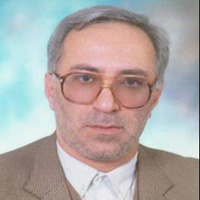The Relation between Social Structure of Cities and Earthquake Vulnerability; Case Study: Tehran City's Neighborhoods
Author(s):
Abstract:
A review on theoretical changes shows that from 1970s on، the research on «vulnerability» and «disaster» pays attention to the reasons and explanation of socio-spatial differences of the vulnerability degree، in addition to concentrate on spatial distribution of damages and disasters، and they haven''t contained themselves with natural forces، damages estimate and emergency response. However، the conducted researches in Iran merely focus on either physical-technical aspect or on different influences and consequences of hazard happenings. In fact، concentration on «hazard Intensity and resulted disaster» and also prevalence of «loss ideas and physical solution» is the feature of most vulnerability measurement and analysis of earthquake in Iran، including metropolis Tehran city. While for the reduction of cities vulnerability to earthquake and making appropriate policies and strategies، first we should know why and how vulnerability in specific city spaces and among specific groups and people is concentrated. What formed the main question of this research as: what are the effective factors of changes? and what are the socio- spatial differences of Tehran city vulnerability to earthquake hazard? In the search for explanatory theory، the review of theoretical literature shows three views: bio-physical، social structure and synthetic. From among، social structure theory focused on the relationship between socio-economical status of people and society groups، and their vulnerability degree to natural hazards. While in reverse، bio- physical theory with the focus on physical-technical aspects، ignores socio- economical aspects of vulnerability، and has no idea about which groups of people and why are more vulnerable. But according to social structure، it is unequal distribution of social and spatial resources، properties and chances in society that forms these socio-spatial differences of vulnerability. Accordingly، to explain the research problem theoretically، main concepts were concluded based on the social structure view، Includes: 1) Socio-Economic Status; 2) Neighborhood; 3) Socio-Spatial Segregation. Then، the conceptual- theoretical model was presented and base on that، 4 hypotheses offered.
Keywords:
Language:
Persian
Published:
Geography and Environmental Planning, Volume:24 Issue: 2, 2013
Pages:
153 to 174
magiran.com/p1183725
دانلود و مطالعه متن این مقاله با یکی از روشهای زیر امکان پذیر است:
اشتراک شخصی
با عضویت و پرداخت آنلاین حق اشتراک یکساله به مبلغ 1,390,000ريال میتوانید 70 عنوان مطلب دانلود کنید!
اشتراک سازمانی
به کتابخانه دانشگاه یا محل کار خود پیشنهاد کنید تا اشتراک سازمانی این پایگاه را برای دسترسی نامحدود همه کاربران به متن مطالب تهیه نمایند!
توجه!
- حق عضویت دریافتی صرف حمایت از نشریات عضو و نگهداری، تکمیل و توسعه مگیران میشود.
- پرداخت حق اشتراک و دانلود مقالات اجازه بازنشر آن در سایر رسانههای چاپی و دیجیتال را به کاربر نمیدهد.
In order to view content subscription is required
Personal subscription
Subscribe magiran.com for 70 € euros via PayPal and download 70 articles during a year.
Organization subscription
Please contact us to subscribe your university or library for unlimited access!


